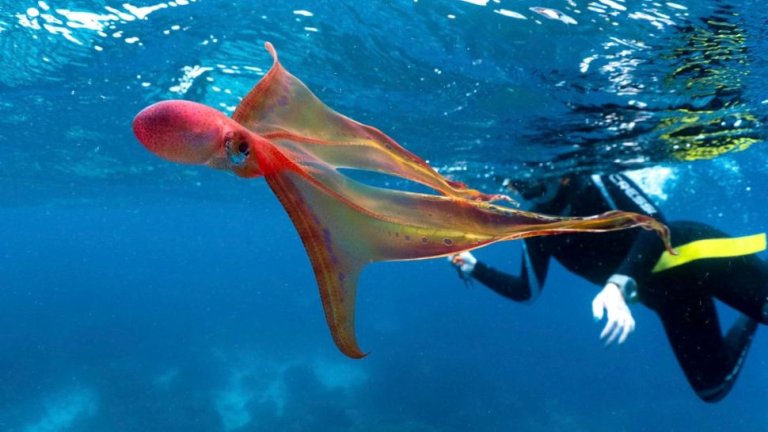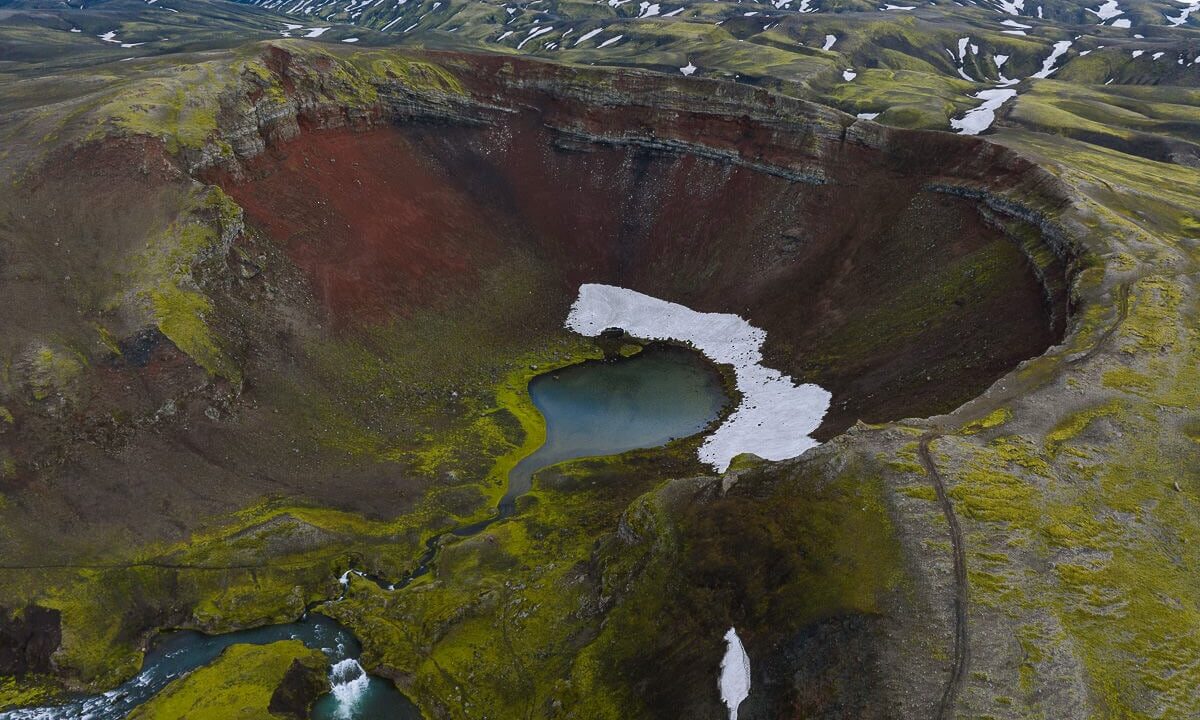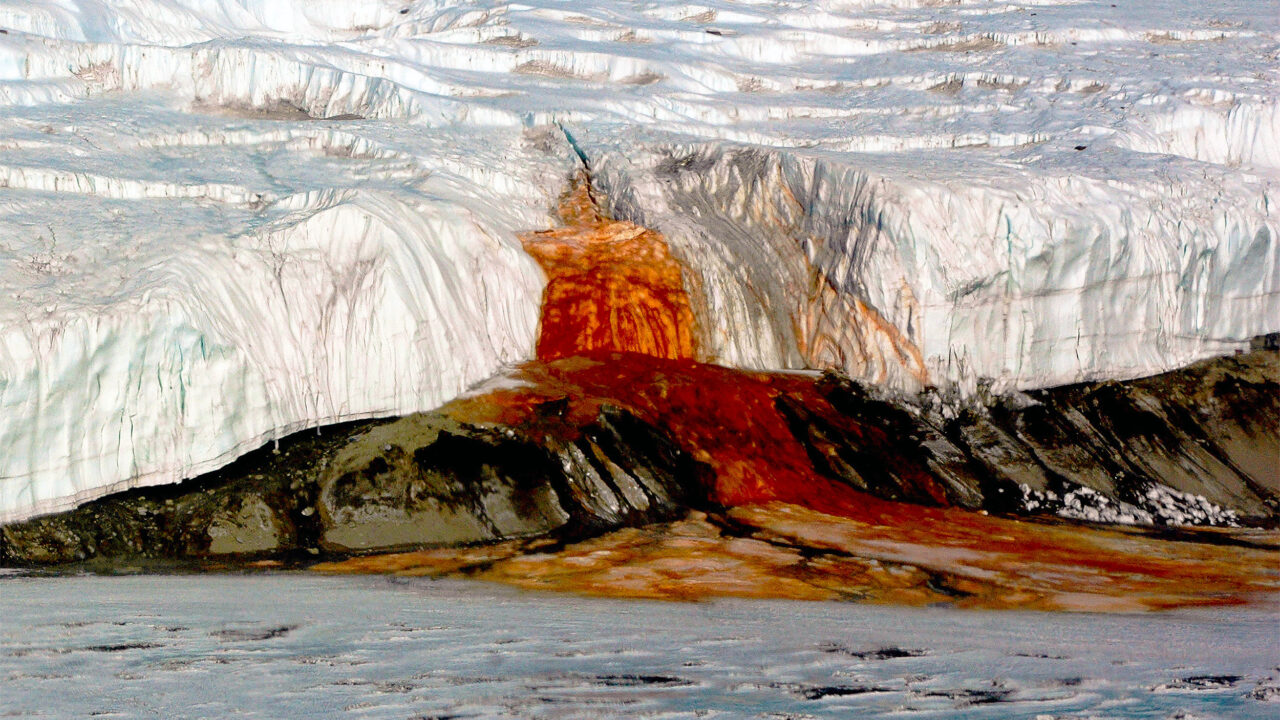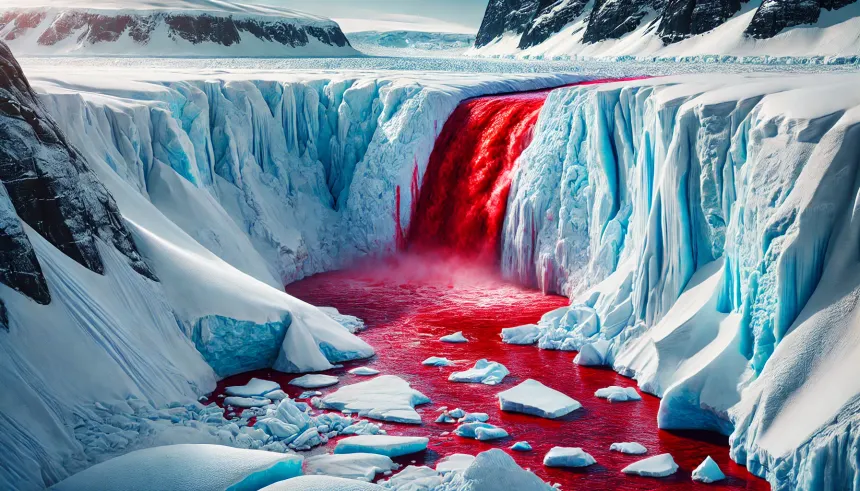Antarctica is often associated with white ice and extreme cold. Yet, amid its frozen landscape lies a phenomenon both fascinating and eerie Blood Falls. From a distance, the flowing water appears blood-red, as if the glacier itself were wounded.
Location of Blood Falls
This unique waterfall is located at Taylor Glacier, McMurdo Valley, East Antarctica. The phenomenon was first discovered in 1911 by scientist Griffith Taylor. At that time, the strange red flow immediately puzzled researchers.
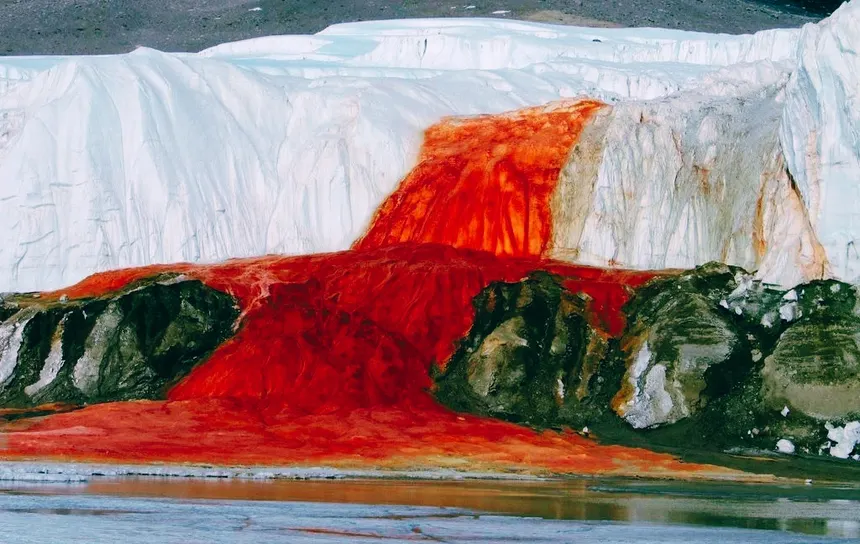
Why Is It Red?
At first, scientists thought the color came from red algae. However, more recent studies revealed the real cause:
- The water originates from a subglacial saltwater lake that has been trapped beneath the glacier for millions of years.
- The water is extremely rich in iron.
- When it comes into contact with air, the iron oxidizes creating a deep red color that resembles blood.
This is why the waterfall is called Blood Falls.
Fascinating Facts about Blood Falls
- Ancient water – The outflowing water is believed to have been trapped for about 1.5–2 million years beneath the ice.
- High salt content – The water is even saltier than the ocean, preventing it from freezing despite Antarctica’s extreme cold.
- Unique microorganisms – Scientists discovered ancient microbes living in the water without light or oxygen, making it one of Earth’s most extraordinary extreme environments.
The Beauty and Mystery of Nature
The phenomenon of Blood Falls showcases the incredible wonders of nature. The blood-red water flowing from a stark white glacier creates a dramatic contrast, as if Antarctica were holding on to hidden secrets.
Conclusion
Blood Falls in Antarctica is not only a visually striking natural phenomenon but also a scientific key to understanding life in extreme environments. From oxidized iron to ancient microbes, it stands as a reminder that Earth still harbors many astonishing mysteries.

